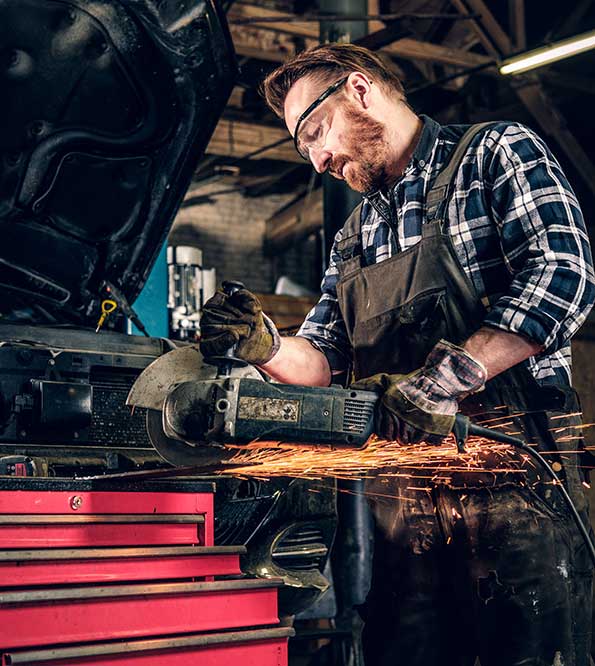Fabrication Process in Structural Steel: The Backbone of Modern Construction
Table of Contents

The fabrication process in structural steel is crucial for building modern infrastructure like high-rise buildings, bridges, and industrial facilities. This process transforms raw steel into durable frameworks that support these structures. But what exactly does the fabrication process involve, and why is it essential for construction?
In this guide, we will explore the steel fabrication process, its applications, and the key benefits it offers. Additionally, we will look at the equipment used and the emerging trends in steel fabrication. If you’re planning a construction project, having a deep understanding of this process can help ensure success.
What is Structural Steel Fabrication?
Structural steel fabrication refers to the process of cutting, bending, and assembling steel components to form a complete structure. These structures serve as the skeleton of large-scale projects such as bridges, industrial plants, and skyscrapers. Skilled technicians use specialized machinery to ensure precision in the fabrication process.
Want to learn more about how steel compares to other materials in construction? Check out our Steel vs. Concrete guide for a detailed comparison.
The Structural Steel Fabrication Process
The fabrication process for steel involves several critical stages that turn raw steel into functional building components:
-
- Cutting: In the first stage, steel is cut into the desired sizes and shapes using plasma cutting, water jet cutting, or shearing to ensure precision.
-
- Bending: After cutting, the steel may need to be bent for specific architectural designs. Press brakes and specialized machines are used to bend steel without compromising its strength.
-
- Welding: Welding is key in the fabrication process, as it joins steel parts together. Techniques like MIG and TIG welding create durable joints that can withstand immense weight and pressure.
-
- Assembly: Once the steel is cut, bent, and welded, it is assembled either in a fabrication shop or directly at the construction site. During this stage, quality control checks are performed to ensure the structure’s durability.
Key Equipment Used in the Steel Fabrication Process
In the fabrication process, specialized equipment is essential for cutting, bending, and assembling steel. Some of the key tools include:
-
- Plasma cutters: Used for precise cutting of steel.
-
- Press brakes: Essential for bending steel into specific angles and shapes.
-
- Welding machines: Employed to securely join steel components.
-
- Overhead cranes: Used to move large steel beams and plates within the fabrication shop.
Applications of Structural Steel Fabrication
Structural steel is utilized in a broad range of industries, with major applications including:
-
- High-rise buildings: Skyscrapers rely on steel frameworks for strength and stability. The high strength-to-weight ratio makes steel ideal for tall structures.
-
- Bridges: Steel is used in long-span bridges to handle heavy loads and withstand harsh environmental conditions.
-
- Industrial plants: Factories and manufacturing facilities utilize steel structures to support heavy equipment and maintain operational safety.
-
- Transport systems: Steel fabrication plays a critical role in creating strong frameworks for transportation infrastructure like railroads, airports, and terminals.
Benefits of Structural Steel Fabrication
Steel is one of the most popular materials for construction projects because it offers several key benefits:
-
- Strength and Durability: Steel can withstand significant weight, making it perfect for supporting large structures. Its durability ensures that buildings and bridges last for decades.
-
- Flexibility in Design: Steel’s malleability allows for complex architectural designs, from curved beams to intricate frameworks. Architects and engineers can push creative boundaries thanks to steel’s flexibility.
-
- Speed of Construction: Pre-fabricated steel components can be quickly assembled on-site, cutting down on construction time and reducing labor costs.
-
- Cost-Effectiveness: While the initial cost of steel may be higher than other materials, its long lifespan and low maintenance requirements make it a cost-effective choice over time.
-
- Sustainability: Steel is 100% recyclable, contributing to eco-friendly construction practices. Many projects use steel with high recycled content, promoting sustainability.
-
- Fire Resistance: When treated properly, steel can resist fire and high temperatures, which is crucial in the construction of large buildings and industrial plants.
Challenges in the Steel Fabrication Process
Despite its many benefits, structural steel fabrication comes with its own set of challenges:
-
- Precision: The fabrication process requires extreme precision. Any errors during cutting or welding can lead to weak points in the structure.
-
- Labor-Intensive: Steel fabrication is a skilled trade that requires experienced technicians, making it labor-intensive and potentially expensive in regions with a skilled labor shortage.
-
- Equipment Costs: The machinery needed for fabrication is expensive, and maintaining this equipment adds to the overall project cost.
Future Trends in Structural Steel Fabrication
As technology advances, steel fabrication continues to evolve. Some key trends include:
-
- Automation: Robotic welders and automated cutting machines are increasingly being used to enhance accuracy and reduce labor costs.
-
- 3D Modeling and Simulation: Engineers now use advanced software to visualize and simulate steel structures before fabrication. This allows potential issues to be detected early in the design phase.
-
- Sustainable Fabrication: The demand for eco-friendly construction practices is driving innovations in steel production and fabrication processes to reduce environmental impact.
Conclusion
The fabrication process in structural steel is the foundation of modern construction, providing the framework for buildings, bridges, and industrial plants. With its strength, flexibility, and sustainability, steel remains an unmatched material for many construction needs.
By understanding the fabrication process, equipment, and emerging trends, architects, engineers, and project managers can ensure the success of their projects. Whether you’re constructing a skyscraper or a bridge, structural steel fabrication is the key to building durable, efficient, and sustainable structures.
The fabrication process in structural steel is the backbone of modern construction, providing strength, durability, and design flexibility for industrial and commercial projects. Companies like SRJ Piping India specialize in precision fabrication, ensuring structures meet safety and performance standards. Additionally, integrating industrial piping systems enhances efficiency in large-scale projects. Following industry standards like AWS structural welding codes and Bureau of Indian Standards (BIS) ensures compliance, reliability, and longevity in construction.
Need Reliable Structural Steel Fabrication?
SRJ Piping India delivers precision-driven structural steel fabrication for safe, scalable, and modern construction projects.
